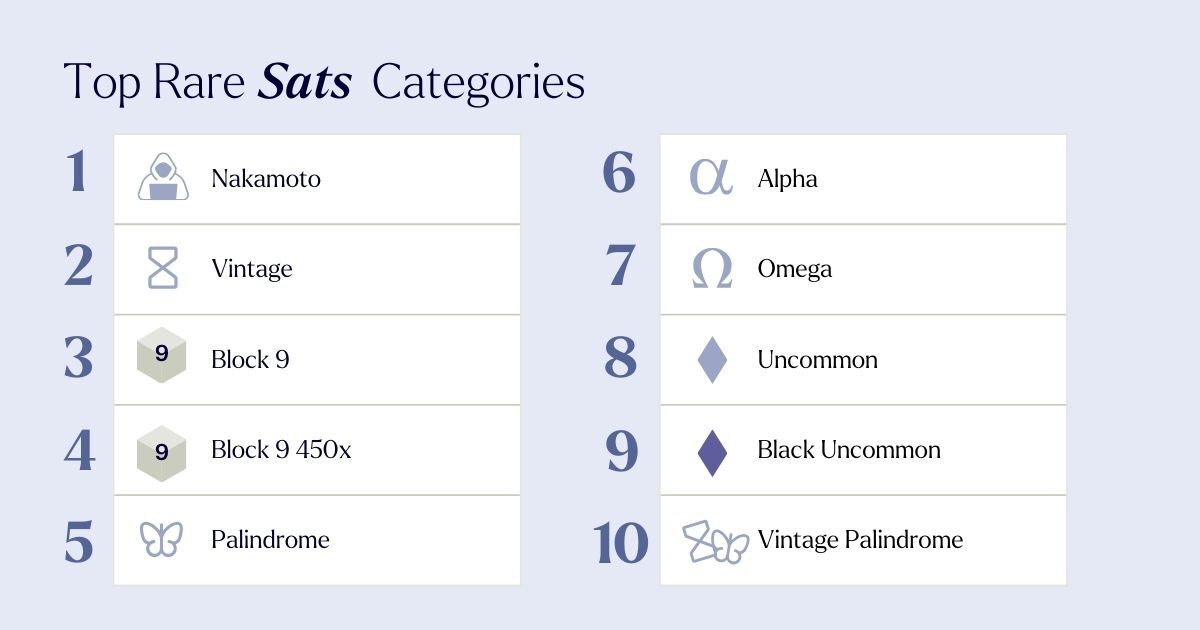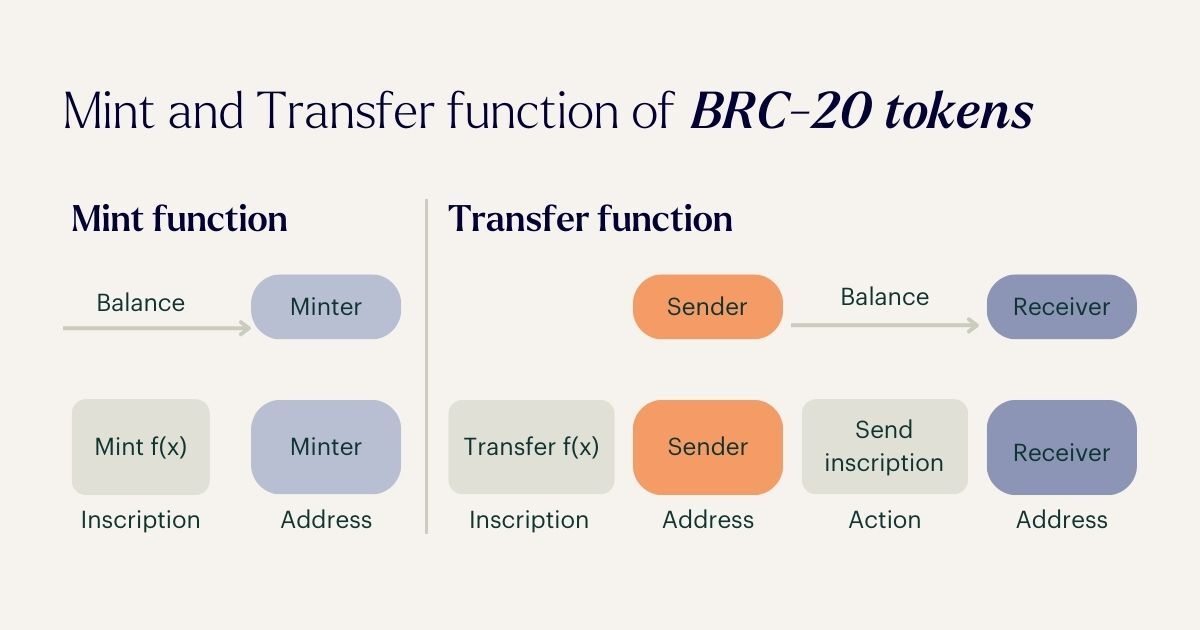Not all Bitcoin are created equal
- Why are some worth more than others?
- Emergence of sat marketplaces
- The Creation of BRC-20
- The future of these assets
One of the key features of money is that is fungible, meaning that you swap bills for another without losing any value, similar to that you can swap one Bitcoin for another. However, during the past years, there has been an interesting development. Users are buying satoshis (sats), the smallest unit of Bitcoin: 0.00000001 BTC, for more than their Bitcoin value. Similar to real currencies, some notes and coins are worth more to some individuals than their nominal value. In this blog, we want to dive deeper into the fact that not all Bitcoin are created equal.
Why are some worth more than others?
Just as with traditional money, certain Bitcoins hold greater value due to unique characteristics that others find appealing or anticipate will appreciate over time. However, their face value remains unchanged, meaning users can't directly purchase more or less of a product or service based solely on the nominal value of these Bitcoins.
Yet, some Bitcoins possess added worth due to blockchain-specific attributes, such as being associated with a particular mined block or having a traceable ownership history documented on the blockchain. Among these distinctive features is the ownership of certain Bitcoins in circulation linked to the anonymous creator(s) of Bitcoin, Satoshi Nakamoto. It's estimated that Satoshi holds approximately 1 million BTC, having executed only a handful of transactions. The rest of these bitcoins sit idle in wallets, rendering them more valuable due to their scarcity within an already limited supply. Furthermore, some digital asset maximalists find it intriguing to obtain assets possessed by the creator which started this digital revolution. This scarcity elevates the value of these sats, given their rarity in circulation, despite having the same nominal value as other bitcoins.

Users are also drawn to certain satoshis due to their historical significance, such as the renowned "Pizza Transaction." On May 22, 2010, Laszlo Hanyecz made the first commercial transaction using Bitcoin, exchanging it for two pizzas, a deal worth a staggering 10,000 Bitcoin. At that time, Bitcoin held minimal value, less than a single cent. However, today, those same 10,000 Bitcoin would be valued at over $350 million. Within this transaction lies a substantial number of sats, as each sat represents one hundredth million of a Bitcoin. Despite their abundance, users are willing to pay a premium to acquire this slice of history, although notably less than what's associated with sats owned by Satoshi.
Another category of unique sats traces back to Block 9—the first block that mined satoshis that are still in circulation today. Among the handful of transactions executed by Satoshi, the sats originating from Block 9 hold particular significance. For instance, the floor price of Block 9 sat is 0,000048 Bitcoin, approximately 2$ while a normal sat is worth $0,0002, with 10.000 times more than a normal sat. Furthermore, as this block was mined by Satoshi, it holds an inherent rarity as the oldest block in circulation and retains an association with Satoshi himself. This scarcity and historic connection contribute to their perceived value among enthusiasts and collectors in the Bitcoin community.
Emergence of sat marketplaces
With the rising interest in these "sats", developers created marketplaces to accommodate this growing demand. Among these platforms is Magisat, featuring ten categories of highly sought-after sats, including those associated with Satoshi and the famous pizza transaction. Within this elite top ten category, a total volume of 32.17 Bitcoin, approximately $1,3M has been traded since July 2023.
Another prominent marketplace catering to these rare sats is Magic Eden, which has seen a total trading volume of 35.47 Bitcoin, around $1,4M since October 2023. While these trading volumes might not be considered significantly high in crypto terms, it's essential to note that, akin to many collectibles, this market operates within a niche. Only a subset of users sees value in these assets at present. If the industry expands and manages to attract more participants, the interest in these assets could potentially grow.
The creation of BRC-20
The industry recently witnessed a fascinating development linked to "sats" with the introduction of BRC-20 tokens. Bitcoin, originally designed as decentralized cash, for a considerable period only supported Bitcoin transactions on its network, unlike other leading networks that accommodate a multitude of tokens. However, with BRC-20, users can now create, mint and transact tokens directly on the Bitcoin network, mirroring Ethereum's capabilities.
In 2021, Bitcoin underwent an upgrade known as Taproot. Within this upgrade, users discovered a loophole allowing them to attach data to a bundle of sats, a minimum of 546. This data incorporates JSON inscriptions, enabling users to encode essential token details onto the sats, like the token's maximum supply and ticker. Once this data is engraved, it becomes immutable. Additionally, by operating on the Bitcoin network, it harnesses the network's robust security and decentralization. As the token launches, other users can engage with it, mint additional tokens, and perform transactions.

In essence, the sats remain sats but have additional JSON data attached to them, this additional information gives it more value, however, the nominal value remains the same.
The surge in BRC-20 tokens mirrors the rise of Ethereum-based tokens in 2017. The initial BRC-20 token, ORDI, emerged in March and has surged to a market capitalization of $450 million. The collective market capitalization of all BRC-20 tokens has surged to a current market cap of $640 million, with its all-time high even surpassing $1 billion.
So even sats without any significant history or unique features can even increase in value. So not all Bitcoin are created equal, but users can even create more value.
The future of these assets
When examining individual sat sales, the bulk of the trading volume appears to be driven by speculation. While some enthusiasts seek a piece of historical significance, the predominant activity within the digital asset industry is speculative trading. Consequently, the value of these sats is entirely dictated by supply and demand, given their identical nominal worth compared to other BTC. However, their ability to sustain value growth amidst industry adoption remains uncertain.
Regarding BRC-20 tokens, the current trading volume primarily reflects speculative activity. Yet, there are ample prospects within the industry to cultivate utility. As mentioned earlier, the trajectory of BRC-20 tokens mirrors the pattern observed in Ethereum's market in 2017, characterized by a surplus of speculative trading. However, as the market evolved, the prevalence of tokens with tangible utility increased. Whether a similar evolution will transpire with BRC-20 tokens remains a significant question, particularly considering the nascent stage of the technology. Nevertheless, the industry observes diverse possibilities concerning the utilization of the Bitcoin network.
Do you want to check if you have any rare sats in your Bitcoin holdings? On the website https://magisat.io/, you can look up your Bitcoin wallet and see if you are the owner of one of the rare sats.
Sign up for our newsletter to stay on top of the crypto market.


